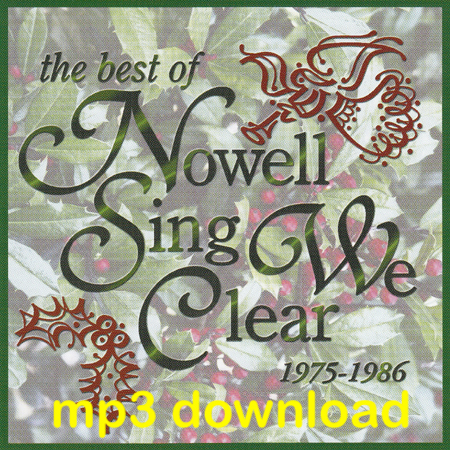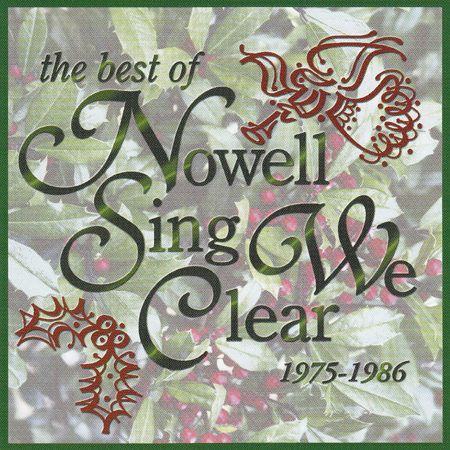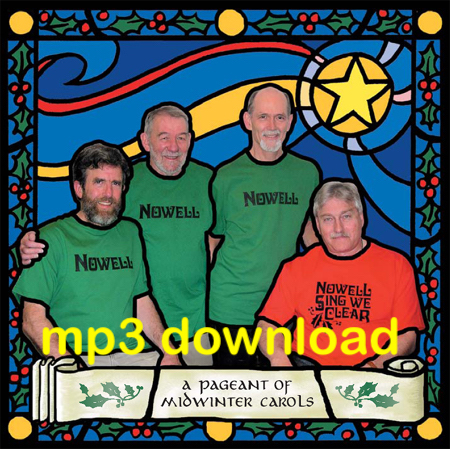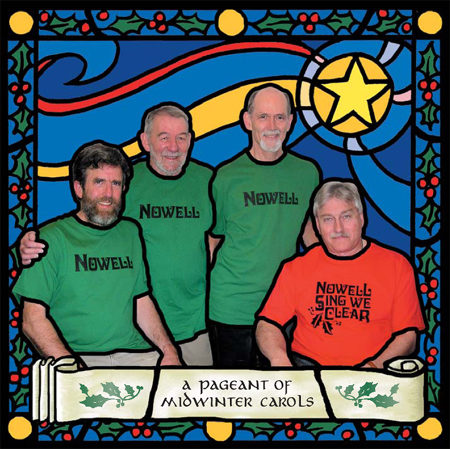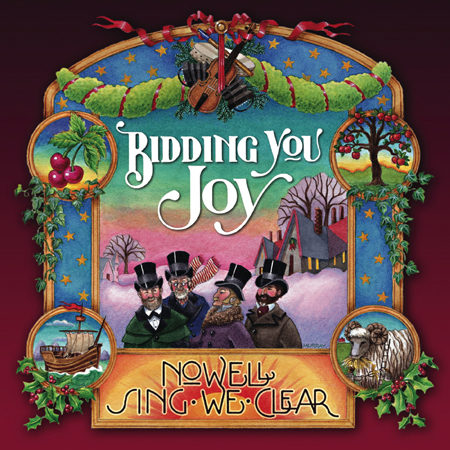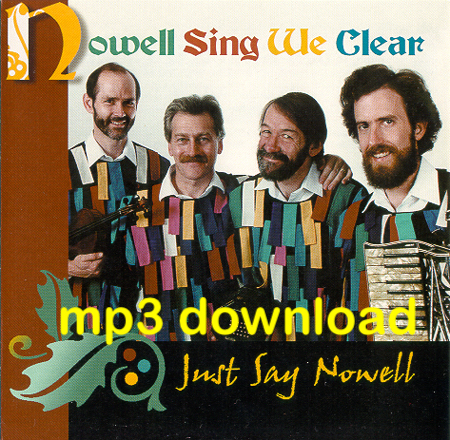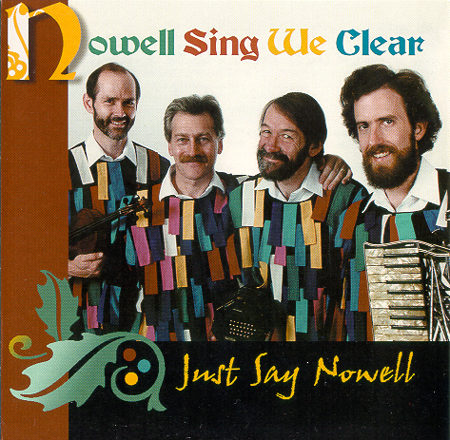Hail, Smiling Morn!, Old Foster, and Jacob’s Well are from the Yorkshire pub Christmas singing traditions found in several parts of the city of Sheffield. Our versions are taken from The Joy of Christmas: Words & Music of Traditional & Local Carols, compiled and presented by Worrall Male Voice Choir, privately published, ca. 1980.
Sweet Chiming Bells is from the same source, though it was originally another setting of “While Shepherds Watched.” We loved the tune and the chorus but didn’t feel the verses suited them very well. The solution was to add the poem “A Song for Christmas Eve” by Clara Broughton Conant from Kriss Kringle Recitations, Dialogs and Songs for Christmas, compiled by Hal J. Weigle (Chicago: Meyer and Brother, 1914). Over the years, our “fifth man,” friend and sound technician, Steve Voorhees, has produced Christmas related curiosities on his perennial search of yard sales and antique stores. Compared with LPs of “Calypso Christmas” and “Christmas Rap” this little book of poems and stories yielded pure gold.
The Carol of the Creatures is from Sydney Carter, liturgical songwriter and creator of the much loved “Lord of the Dance.”
Shepherds, Arise! is from the repertoire of the Copper family of Rottingdean in Sussex. The setting we think is by Alan Whear in the shape-note style.
The Holly and the Ivy, as recorded here, is one of several versions collected by Cecil Sharp, this one from a Mrs. Hazeltine of Camborne, Cornwall. (See Cecil Sharp’s Collection of English Folk Songs edited by Maud Karpeles, Oxford University Press, 1974.)
Another in the series of carols we have explored from the custom of “hunting the wren” belonging to St. Stephen’s day (December 26th), The Cutty Wren is a song I learned a long time ago from a 45 r.p.m. recording of the Ian Campbell Folk Group. “Cutty” is an Irish and northern English dialect word meaning “little.”
A Mr. Wiltshire of Cambridgeshire in England sang The Joys of Mary for Ralph Vaughan Williams. He sang it as “The Nine Joys of Mary”: we give seven joys, the number most commonly found in the English tradition. (See Folk Songs Collected by Ralph Vaughan Williams, edited by Roy Palmer, London: J. M. Dent & Sons Ltd., 1983).
I think we learned this version of The Bitter Withy from the singing of our friend Louis Killen.
The March of the Kings (“Marche des Rois Mage,” “Marcho di Rei”) is a traditional Provenal carol probably intended for the fifes and drums. The tune is best known for its adaptation by Georges Bizet as incidental music for Daudet’s “L’Arlesienne.” To make a singable version, we blended verse #1 from the translation in International Carols with verses #2 and #3 from The New Oxford Book of Carols (edited by Hugh Keyte and Andrew Parrott, Oxford University Press, 1992).
We loved this “Crawn” version of the widespread carol I Saw Three Ships on first sight. It was collected in 1895 from a Humber estuary boatman on the east coast of England, and ultimately published by Baring-Gould in his Garland of Country Songs in the same year. It finally makes sense out of the puzzle of why three ships appear in the Christmas narrative at all. Legend has it that the skulls (“crawns” = “craniums” = “crowns”?) of the “Kings” or “Wise Men” were taken and lodged in the cathedral at Cologne.
Hail Happy Morn was found by Dave Townsend in the Thomas Hardy manuscripts and it is used with permission. It is part of the repertoire which is now known as “West Gallery Music.” This multiple-part singing and instrumental style of hymnody seems to have been the precursor of what became “shape-note” music in the U.S. This was originally a two-part setting; we have added lines to suit our voices.
Old Christmas Return’d (or Hospitality Reviv’d) and Carol for the New Year are taken from William Chappell’s invaluable chronological study Popular Music of the Olden Time (1859, reprinted by Dover Publications, Inc., 1965).
Yet another New Year’s Eve wassail song to add to our collection, We’ve Been a While A-Wandering was found in The New Oxford Book of Carols. It is from Yorkshire.
Part of the pleasure obtained from twenty-one years of delving into the vast Christmas repertoire of songs and carols is the discovery of different versions of songs that people know well. They’re not always received with joy by our audiences who don’t necessarily appreciate having to adjust to another song when they’ve just got to know and love the old one. We Wish You a Merry Christmas is a medley of carols collected in the English Midlands. (See Songs of the Midlands edited by Roy Palmer, EP Publishing Limited, 1972).
Tony Barrand















